Coin in the shape of a shovel
During the two periods of the Eastern Zhou Dynasty (770–256 B.C.), the Spring and Autumn Period (771–476 B.C.) and (in particular) the Warring States Period (475–221 B.C.), bronze money appeared in many forms, mostly miniature replicas of everyday objects such as shovels, knives, bells and other musical instruments, keys, clothes, and other types of weapons and tools. Each state of the fragmented Zhou dynasty territory minted its own money, which is why these coins are often referred to as “state coins” or guobu 國布 in Chinese numismatics. The most common types of coins, and the longest in circulation, were shovel-shaped coins (bubi 布幣 or buqian 布錢) and knife-shaped coins (daobi 刀幣 or daoqian 刀錢).
The coin in the photo is an example of a coin in the shape of a shovel with a flat handle. Flat-handled shovels are slightly later than their predecessors with a hollow handle and date from the Warring ... more
During the two periods of the Eastern Zhou Dynasty (770–256 B.C.), the Spring and Autumn Period (771–476 B.C.) and (in particular) the Warring States Period (475–221 B.C.), bronze money appeared in many forms, mostly miniature replicas of everyday objects such as shovels, knives, bells and other musical instruments, keys, clothes, and other types of weapons and tools. Each state of the fragmented Zhou dynasty territory minted its own money, which is why these coins are often referred to as “state coins” or guobu 國布 in Chinese numismatics. The most common types of coins, and the longest in circulation, were shovel-shaped coins (bubi 布幣 or buqian 布錢) and knife-shaped coins (daobi 刀幣 or daoqian 刀錢).
The coin in the photo is an example of a coin in the shape of a shovel with a flat handle. Flat-handled shovels are slightly later than their predecessors with a hollow handle and date from the Warring States Period, when they appeared in various forms in individual countries. One of the more common types of these coins was the “shovel with pointed feet” (jianzu bu 尖足布), which originated between 350 and 250 B.C. They are characterised by pointed legs and squared shoulders, as we can see on the coin in the photo. Shovels of this type are usually associated with the state of Zhao 趙, and these coins are most commonly found in the area of present-day Shanxi and Hebei provinces. The inscription on this specimen reads Zishi ban 茲氏半, which could mean that the coin originated in the area of Zishi 茲氏 in the state of Zhao, and that its value was banjin 半釿i.e., half a jin jina (weight measure equivalent to about half a kilogram). (MG)

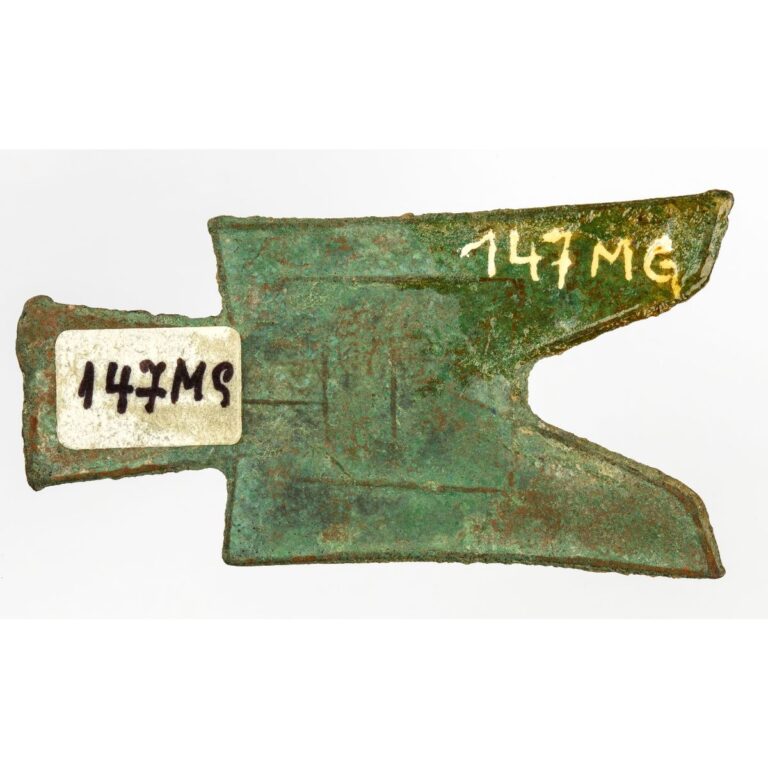
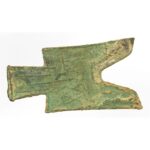
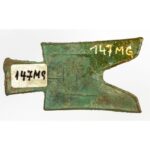

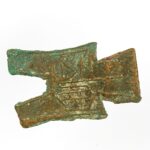






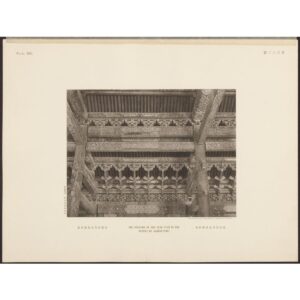


























Do you have a comment or additional information about the subject?